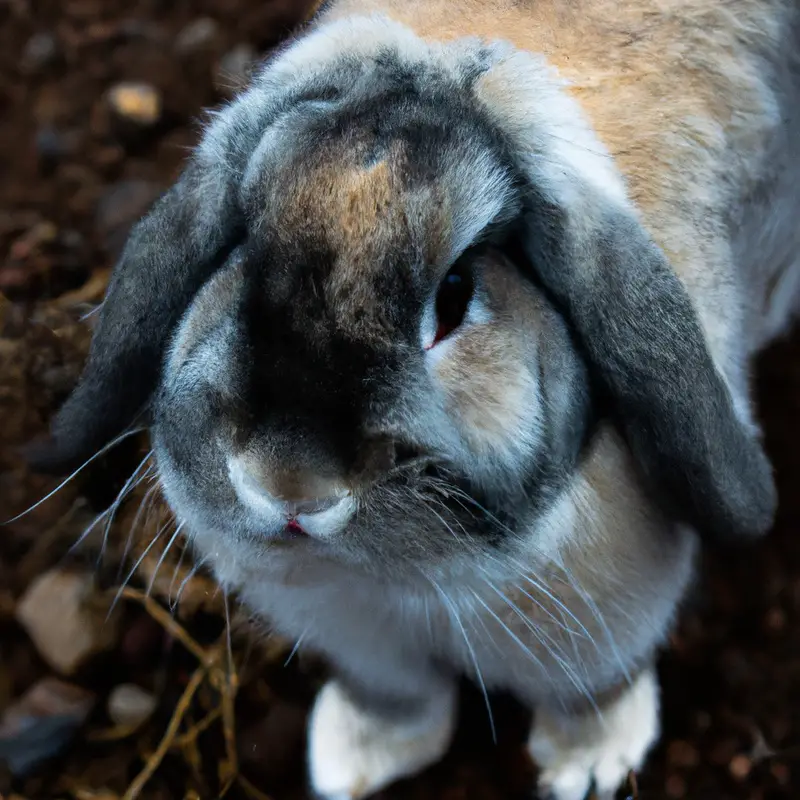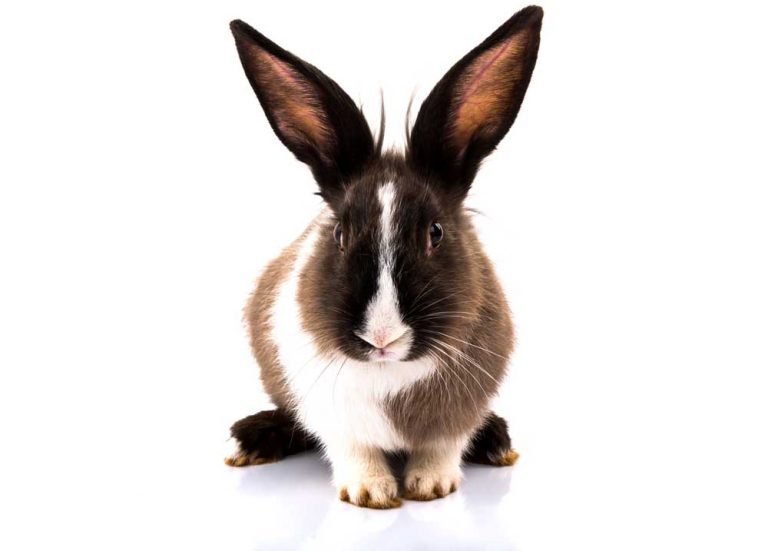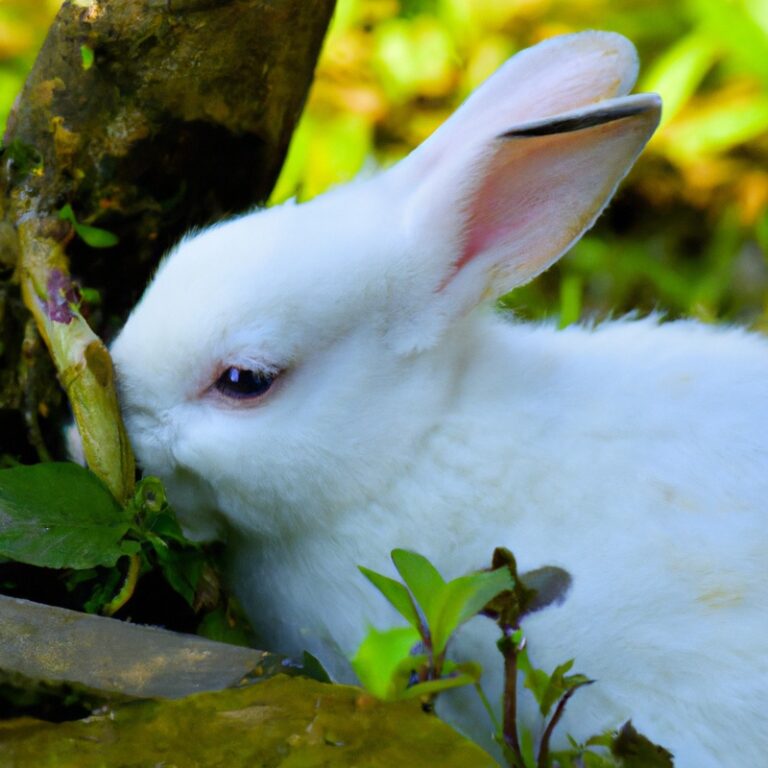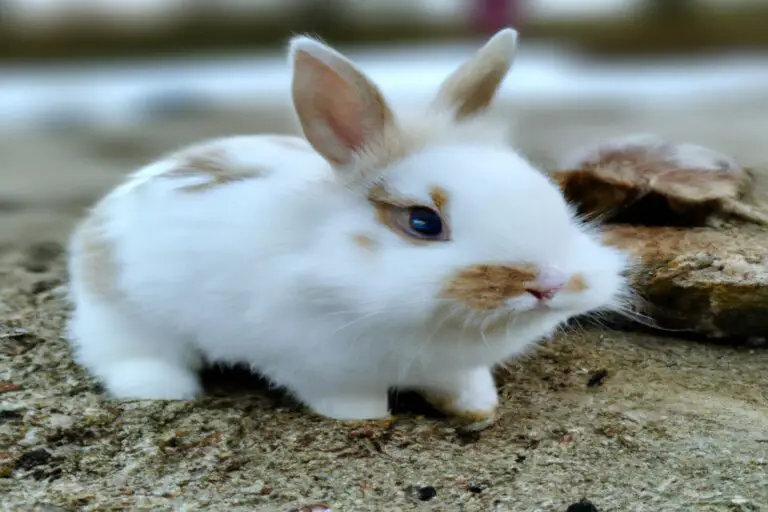Do Rabbits Like Fans Blowing On Them? Explained
Key Takeaways:
- Rabbits do not enjoy having fans blowing directly on them.
- Constant exposure to strong winds can be stressful and harmful to rabbits.
Are you a proud rabbit owner looking for ways to keep your furry friend comfortable? Well, here’s a question that might have crossed your mind: do rabbits like fans blowing on them?
It’s a topic of much debate among rabbit enthusiasts, and today we’re going to dive deep into the fascinating world of rabbit behavior to find out the answer.
Understanding how rabbits perceive and react to air movement is essential to providing them with the best care possible. So, grab your carrot snacks, sit back, and let’s explore the pros and cons of using fans to cool down our beloved bunnies.
| Blowing Fans on Rabbits | Yes | No |
|---|---|---|
| Preference | Some rabbits may enjoy the cool breeze. | Some rabbits may not like the sensation. |
| Comfort | The air circulation can help keep rabbits cool in hot weather. | Direct air can be unsettling for rabbits and make them uncomfortable or even stressed. |
| Ears Sensitivity | Rabbits’ ears are sensitive to loud noises, so a gentle fan may be soothing for them. | The sound or pressure from a fan blowing can be overwhelming for rabbits. |
| Risk of Ingesting Foreign Objects | A fan can minimize the presence of insects or dust in the rabbit’s environment. | A fan can blow small objects around that the rabbit may accidentally ingest. |
Understanding Rabbit Behavior
Understanding Rabbit Behavior: Gain insights into the unique traits and behaviors of rabbits to provide them with the best possible care.
Unique Traits of Rabbits
Rabbits have some unique traits that set them apart from other animals. Here are a few of their distinctive qualities:
- Soft fur: Rabbits have a dense coat of soft fur, which makes them great for snuggling and petting. Their fur comes in various colors and patterns, adding to their charm.
- Agile and quick: Rabbits are known for their quick reflexes and agility. They are excellent jumpers and can change directions swiftly, making them fun to watch and play with.
- Herbivorous diet: Unlike carnivorous animals, rabbits have a unique digestive system that allows them to thrive on a diet consisting mainly of hay, grass, and leafy greens. Their teeth also continually grow to accommodate their dietary needs.
- Social behavior: Rabbits are social animals and enjoy the company of other rabbits. They communicate through a combination of body language, vocalizations, and scent marking.
- Binkies and zoomies: One of the most endearing traits of rabbits is their joyful behavior known as “binkies” and “zoomies.” Binkies are ecstatic leaps and twists in the air, while zoomies are energetic bursts of running and hopping.
- Sensitive respiratory system: Rabbits have delicate respiratory systems, making them vulnerable to dust, strong odors, and irritants in the air. It’s essential to keep their living environment clean and free from pollutants.
- Burrowing instincts: Rabbits have a natural instinct to dig and burrow. They create tunnels and warrens to seek shelter and feel safe. Providing appropriate toys and digging spaces can keep them mentally stimulated.
These unique traits contribute to the charm and individuality of rabbits. Understanding and appreciating their specific needs can ensure their well-being.
The Importance of Proper Rabbit Care
Proper rabbit care is essential for the overall health and well-being of your furry friend.
It involves providing them with a balanced diet, fresh water, a clean and safe living environment, regular exercise, and plenty of love and attention.
Regular veterinary check-ups are also crucial to ensure their health is properly monitored and any potential issues are addressed early on.
Additionally, providing mental stimulation through toys and interaction can help prevent boredom and behavioral problems.
By giving your rabbit the care they need, you can ensure they live a happy and fulfilling life.
The Significance of Proper Ventilation for Rabbits
Proper ventilation is essential for rabbits’ well-being.
Understanding Ventilation Needs of Rabbits
Rabbits require proper ventilation to maintain their health and well-being. Good airflow is crucial for ensuring they have clean air and proper temperature regulation.
When it comes to their living area, make sure there is adequate ventilation to prevent the buildup of ammonia from urine and reduce the risk of respiratory issues.
Allow fresh air to circulate, but avoid fans directly blowing on them as it may cause stress. Ensure that the ventilation is balanced, keeping humidity levels in check while discouraging drafts.
Remember, a well-ventilated environment is essential for keeping your rabbits happy and healthy.
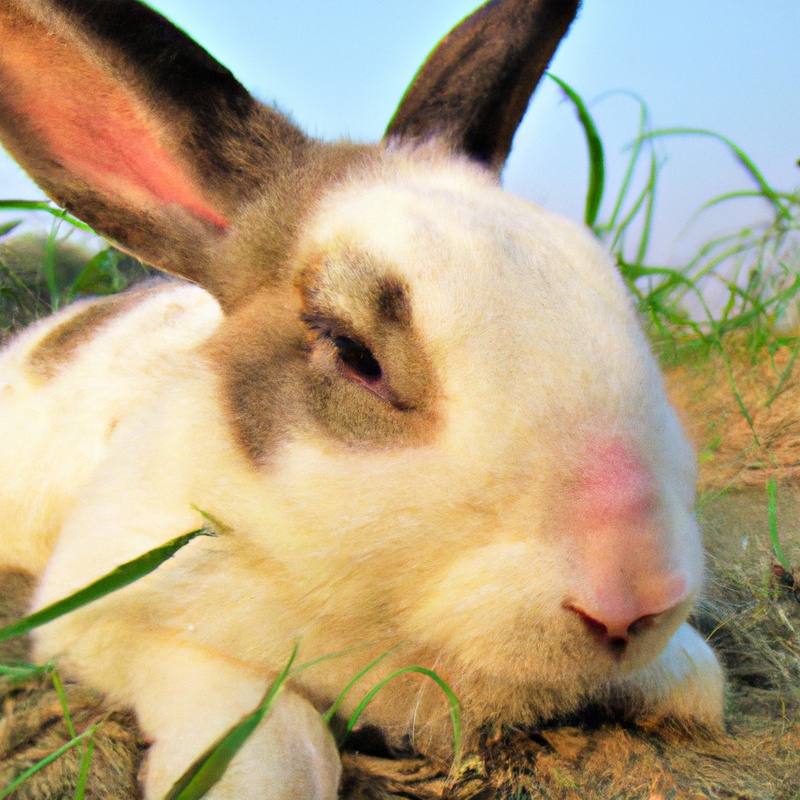
Benefits of Fresh Air for Rabbits
Fresh air is incredibly important for rabbits.
It helps to remove stale odors, humidity, and bacteria from their living environment.
Some benefits of fresh air for rabbits include:
- Improved respiratory health: Fresh air helps to prevent respiratory issues and promotes healthier lungs for rabbits.
- Enhanced mental well-being: Being exposed to fresh air and the natural outdoor environment can reduce stress and anxiety in rabbits.
- Increased exercise opportunities: Outdoor exposure provides rabbits with more space to hop, run, and explore, promoting physical activity and overall fitness.
Ensure proper ventilation and allow your rabbit to spend time outdoors in a secure and protected area for these benefits.
Optimal Temperature and Humidity Levels for Rabbits
Rabbits thrive in temperatures between 60-70°F (15-21°C) with a relative humidity of 30-50%.
High temperatures can lead to heat stress, while low temperatures can cause hypothermia.
To maintain optimal levels, provide good ventilation to ensure fresh air circulates.
Avoid exposing rabbits to drafts as it can cause respiratory issues.
It’s essential to monitor and adjust temperature and humidity to promote a healthy and comfortable environment for your rabbits.
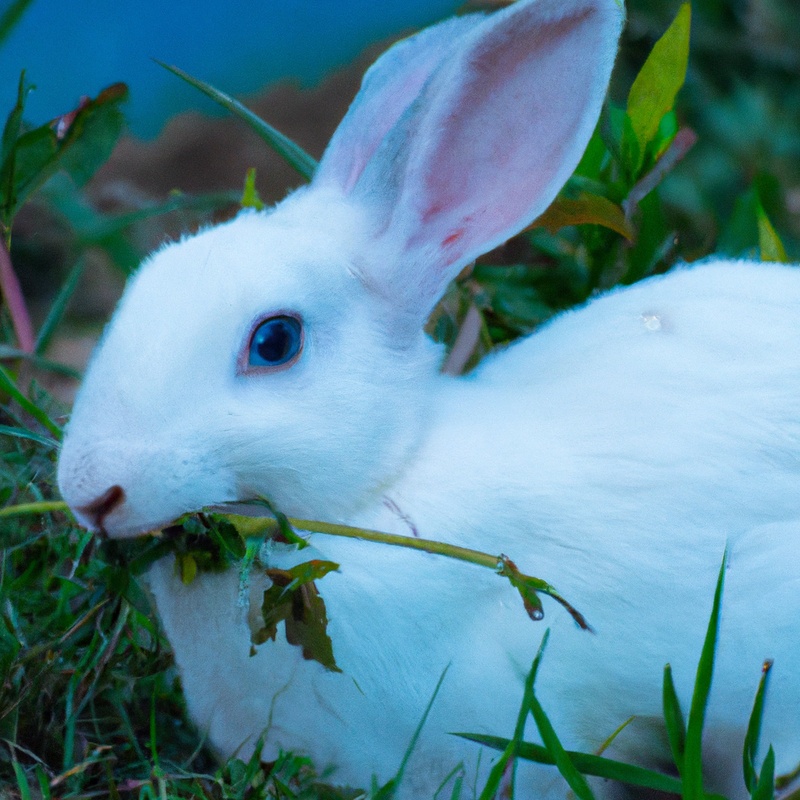
Exploring Rabbits’ Sensitivity to Airflow
Rabbits are sensitive to airflow and can be affected by strong gusts of wind.
Monitoring and adjusting airflow is important for their comfort and health.
Sensitivity of Rabbits to Air Movement
Rabbits are quite sensitive to air movement. They have delicate respiratory systems and can easily be affected by drafts or gusts of wind.
Air movement can cause them discomfort and stress, as well as put them at risk of respiratory issues.
It’s important to provide rabbits with a well-ventilated but draft-free environment to ensure their health and well-being. Avoid placing fans directly towards rabbits, as the strong airflow can be overwhelming for them.
Instead, focus on maintaining a stable and comfortable temperature in their living space.
Appropriate Placement of Fans in Rabbit Areas
When setting up fans in areas where rabbits spend time, it’s important to consider their sensitivity to airflow.
Place fans in a way that avoids directly blowing air onto the rabbits, as this can cause stress and discomfort.
Instead, position fans to create gentle air circulation throughout the space.
This can be done by placing fans higher up, aiming them towards walls or ceilings, or using multiple fans to distribute airflow evenly.
By being mindful of fan placement, you can ensure a comfortable environment for your rabbits.
Monitoring and Adjusting Airflow for Rabbits
Monitoring and adjusting airflow for rabbits is important for their well-being. Keep an eye on the temperature and humidity levels in their environment, as rabbits are susceptible to heat stroke and respiratory issues.
Use a thermometer and hygrometer to regularly check these levels.
Provide proper ventilation to prevent stagnant air and buildup of ammonia. Avoid placing your rabbit’s enclosure in direct drafts or near fans.
If using a fan, ensure it is set on a low speed and angled away from the rabbit’s resting area.
Regularly assess your rabbit’s behavior and body language to gauge their comfort with the airflow.

Factors to Consider in Fan Usage Around Rabbits
Considerations for fans around rabbits include breed tolerance, health conditions, and potential risks of excessive airflow.
Rabbit Breeds and Their Tolerance to Airflow
Different rabbit breeds have varying tolerance levels to airflow.
Some breeds, like the Angora and the Lionhead, have dense and thick coats that can make them feel uncomfortable with strong airflow.
These breeds may prefer a more gentle breeze or even no airflow at all.
On the other hand, breeds such as the Rex or the Mini Lop have shorter and less dense fur, making them better able to tolerate airflow.
It’s important to consider the specific breed of your rabbit when deciding whether to use a fan around them.
Health Conditions and Fan Usage
When it comes to the health conditions of rabbits and fan usage, there are a few things to consider. Firstly, rabbits are sensitive to temperature extremes, so using a fan to help keep them cool in hot weather can be beneficial.
However, it’s important to ensure that the fan is not blowing directly on the rabbit, as this can cause respiratory issues or discomfort.
Secondly, if your rabbit has any existing respiratory conditions, it’s best to avoid using a fan altogether to prevent any worsening of their symptoms. Overall, it’s crucial to monitor your rabbit’s well-being and adjust fan usage accordingly.
Potential Risks of Excessive Airflow for Rabbits
Excessive airflow can pose potential risks to rabbits. The strong gusts generated by fans can lead to respiratory issues, such as irritation, sneezing, or even pneumonia.
Rabbits are sensitive animals, and sudden changes in temperature caused by excessive airflow can also stress them out, making them more susceptible to illnesses.
It is important to ensure a well-ventilated but draft-free environment for your rabbits, avoiding direct airflow from fans or air conditioning vents. Regularly monitoring your rabbit’s behavior and seeking veterinary advice if any health concerns arise is crucial.
Signs of Rabbit Discomfort with Fans
Rabbit discomfort with fans can be indicated through behavioral changes and physical symptoms.
Behavioral Indicators of Rabbit Discomfort
Rabbits may display several behavioral indicators when they are uncomfortable.
Here are some signs to look out for:
- Restlessness: If your rabbit is constantly fidgeting or seems unable to settle down, it may be a sign of discomfort.
- Aggression or avoidance: Rabbits may become aggressive or avoid human interaction when they are uncomfortable, trying to protect themselves.
- Hiding or seeking isolation: Seeking a hiding spot or isolating themselves from their usual environment can be a sign of distress.
- Increased grooming: Excessive grooming, particularly in one area, can indicate discomfort or pain.
- Changes in appetite or drinking habits: If your rabbit is eating less or drinking more/less than usual, it could be a sign of discomfort.
These indicators should not be ignored, and it is important to consult with a veterinarian if you observe any concerning behavior in your rabbit.
Physical Symptoms of Rabbit Discomfort
If your rabbit is feeling uncomfortable, you may notice some physical symptoms. These can include excessive grooming, such as constantly licking themselves or pulling out their fur.
They may also exhibit signs of stress, such as teeth grinding or fast breathing.
Another common indicator is a hunched or tense posture, as well as a lack of appetite. Paying attention to these physical cues can help you identify and address any discomfort your rabbit may be experiencing.
Alternatives to Fans for Rabbit Cooling
There are other options besides fans to keep rabbits cool.
Natural Cooling Methods for Rabbits
If you’re looking for natural ways to help your rabbit stay cool during hot weather, there are a few methods you can try. First, ensure your rabbit has access to shade at all times.
This could be provided by a covered area in their enclosure or by bringing them inside during the hottest parts of the day.
Another option is to provide a cool surface for them to lay on, such as tiles or a chilled ceramic plate. You can also place frozen water bottles wrapped in a towel in their enclosure for them to snuggle up to.
And of course, make sure they have plenty of fresh, cool water available at all times.
Artificial Cooling Solutions for Rabbits
Are you looking for ways to keep your rabbits cool in hot weather?
Here are some artificial cooling solutions you can consider:
- Frozen water bottles: Place a frozen water bottle in your rabbit’s enclosure. They can lean against it if they feel too hot.
- Ceramic tiles: Place ceramic tiles in your rabbit’s enclosure. Rabbits can lay on the cool surface to cool down.
- Frozen treats: Make some frozen treats for your rabbits using fruits or vegetables. Not only will they enjoy them, but it will also help cool them down.
- Cooling pads: Invest in cooling pads specifically designed for pets. These can be placed in your rabbit’s enclosure to provide a cool surface for them to rest on.
Remember to always monitor your rabbits closely for signs of overheating and consult a veterinarian if you have any concerns.
Creating a Comfortable Environment for Rabbits in Hot Weather
Creating a comfortable environment for rabbits in hot weather is essential for their well-being.
Here are some tips to help you keep your furry friends cool:
- Provide plenty of fresh water for your rabbits to drink.
- Place their hutch or enclosure in a shaded area to avoid direct sunlight.
- Use frozen water bottles or ceramic tiles for them to lie on and stay cool.
- Wetting their ears with a damp cloth can help them regulate their body temperature.
- Consider using a misting system or a fan set on low to provide a cooling breeze.
- Avoid handling your rabbits too much during hot periods as it can increase their stress levels.
Remember, rabbits are sensitive to heat, so taking these steps will go a long way in ensuring their comfort during hot weather.
Frequently Asked Questions
Can rabbits get sick from fans blowing on them?
No, rabbits cannot get sick from fans blowing on them.
Unlike humans, rabbits regulate their body temperature through their ears and can tolerate higher temperatures.
However, it’s essential to ensure that the fan is not blowing directly on the rabbit or causing a draft, as this can make them uncomfortable.
Providing proper ventilation and a cool, shaded area for your rabbit is key for their well-being in hot weather.
Do rabbits enjoy fans blowing on them?
Rabbits do not enjoy fans blowing on them. They have a natural body temperature regulation system that works best in a comfortable environment.
The direct blowing of air from a fan can disrupt their natural temperature regulation and cause stress.
Rabbits prefer a consistent, mild airflow rather than strong gusts. It’s best to provide them with a cool and well-ventilated space, without direct exposure to fans.
How can I keep my rabbit cool in the summer without using a fan?
To keep your rabbit cool in the summer without using a fan, there are a few things you can do. Firstly, make sure your rabbit has access to plenty of fresh water to drink.
You can also place frozen water bottles in their enclosure for them to lie against.
Providing them with a cool and shaded area is crucial, so consider moving their hutch to a shaded spot or erecting a sunshade. Lastly, offer them cooling treats like frozen fruits and vegetables to help keep their body temperature down.
Remember, your rabbit’s comfort is important, so be mindful of their needs during the hot months.
Final Verdict
Understanding rabbit behavior and their unique traits is crucial for providing proper care. While proper ventilation is important for rabbits, it is essential to consider their sensitivity to airflow.
Appropriate fan placement and monitoring airflow are key factors to ensure the comfort and health of rabbits.
Factors such as breed and health conditions should be considered when using fans around rabbits. Signs of rabbit discomfort with fans should be closely observed.
Alternatives to fans, such as natural and artificial cooling methods, can be used to keep rabbits cool.
In summary, it is important to prioritize a comfortable environment for rabbits while considering their sensitivity to airflow.

